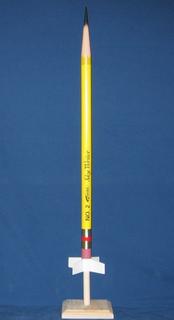
I have only been into model rocketry for a month and I am already sick of crawling on the ground to connect my ignition leads to the motor. The
EstesPort-A-Pad just isn't cutting it and I am ready to try building larger rockets and I don't want to be lugging around two launch pads. I have been looking all over the web for some ideas for about a week.
Well my search ended when I stumbled across this site
(www.launchpad.hofle.com) that offered free plans for constructing a launch pad for $20. I was skeptical at first but after reading through the well detailed and easy to follow plans I decided to give it a try.
I printed off the shopping list that is on the site and went to Home Depot. I found everything on the list except the
90 degree elbows with the flat side so I tried Lowes but they didn't have it either. The web site gives you a suggestion for making your own and it worked fine. I used JB Weld to attach a washer to the cut off end of a tee fitting. All the parts without paint or the epoxy came to around $20 just like the site says.
After getting all the supplies I headed to my workshop to get started. The instructions, pictures, and tips all made the entire project pretty easy. You do need some tools and mechanical common sense but overall anyone can do it. I was done with construction in about three hours. I painted it red to cover up all the ugly laser etched bar codes on the PVC.
I took it out August 21st for a launch with some friends and it worked great. No more crawling on the ground for me. The base is rock solid and very easy to use. Everyone at the launch really liked it and I think a couple of them may build one of their own. I'm glad I decided on this launch pad to build and I am looking forward to many more launches with it. Hmmm...now all I need is a 12 volt launch controller.
 My wife, Stacey gave this model to me as a gift for my birthday. It is part of the E2X Series of Estes model rockets. I have built three of these type of model rockets and they are extremely easy to build and require no paint. Despite the lack of skill needed to build these rockets they are usually good fliers.
My wife, Stacey gave this model to me as a gift for my birthday. It is part of the E2X Series of Estes model rockets. I have built three of these type of model rockets and they are extremely easy to build and require no paint. Despite the lack of skill needed to build these rockets they are usually good fliers.




















